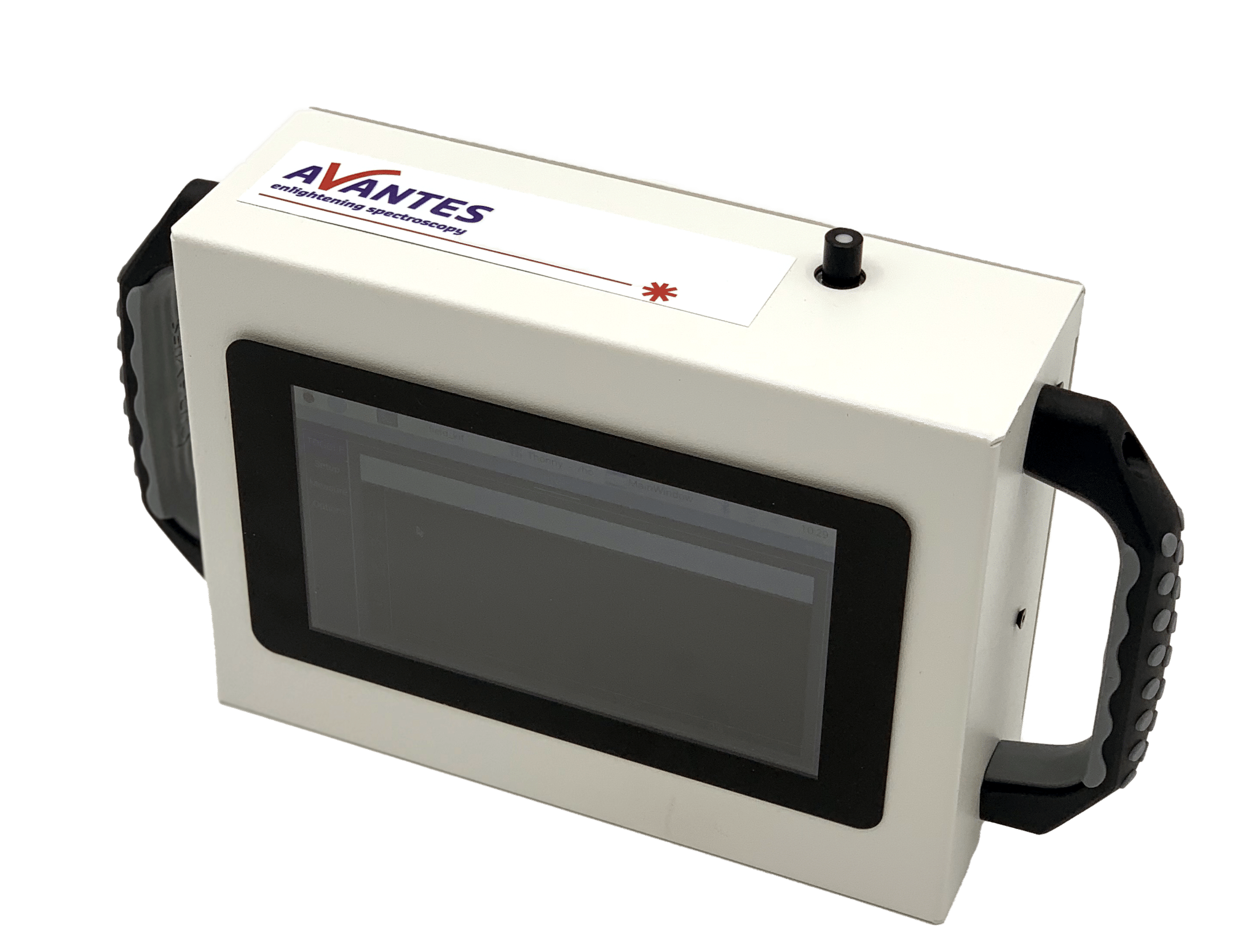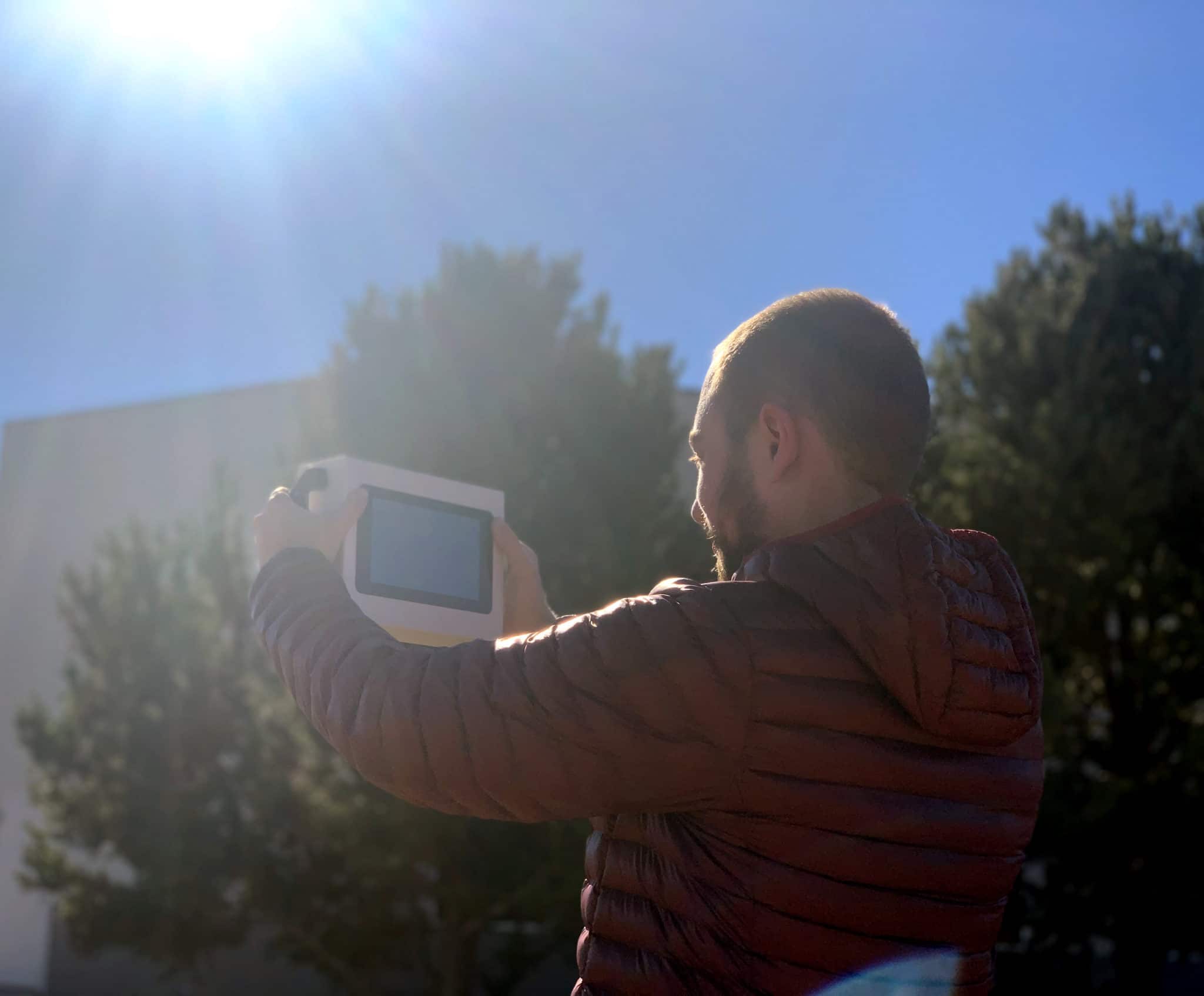Irradiance and field measurements
Conducted by: David Ademe (Applications Engineer), Avantes Inc.
Background/Applications:
Spectral irradiance is the energy of a surface per unit frequency or wavelength, depending on whether the spectrum is taken as a function of frequency or of wavelength. The two forms have different dimensions: spectral irradiance of a frequency spectrum is measured in watts per square meter per hertz (W·m−2·Hz−1), while spectral irradiance of a wavelength spectrum is measured in watts per square meter per meter (W·m−3), or more commonly watts per square meter per nanometer (W·m−2·nm−1). Irradiance is often called intensity because it has the same physical dimension.
Spectral irradiance is extremely useful in measuring the sun and solar applications, including field measurements. In this experiment, we will be demonstrating the usefulness of the AvaSpec-Mini spectrometer in the field to collect irradiance spectra on the go.
 Description of System:
Description of System:
The setup for this experiment will be utilizing a demo portability kit, developed by Avantes Inc. This kit combines an AvaSpec-Mini with a battery pack running on a Raspberry Pi and touch screen. The goal of this package is to demonstrate the usefulness of the AvaSpec-Mini in portable field applications.
The AvaSpec-Mini-CL series can be equipped with either a 2048-pixel CMOS detector or our first-to-the-market 4096-pixel array. Enjoy the speed and enhanced native UV/NIR response of CMOS with an incredible resolution of up to 0.09 nm unavailable anywhere else. The unique optical design allows stray-light levels from as low as 0.2% and the fast response time boasts data transfer speeds as fast as 4.6 ms/scan and integration times ranging from 30 µs to 2 s. The AvaSpec-Mini can now be used for NIR applications as well with the new AvaSpec-Mini-NIR configuration using a 256-pixel InGaAs array.
Attached to the SMA port of the spectrometer is a direct attach cosine corrector. Cosine correctors are a low-cost option used to collect light from a 180° angle. Cosine correctors are an excellent light collection device in irradiance applications as they can collect a larger area of light, which can be challenging with other collection optics such as collimating lenses and bare fiber optics. This is also a more cost-effective and portable solution to bulky and expensive integrating spheres.
Description of Methodology:
For this experiment, we will be utilizing the AvaSpec-Mini2048CL with the direct attach cosine corrector. An irradiance calibration has been performed on the spectrometer with a NIST traceable tungsten halogen calibration lamp
For our data collection, we will be utilizing the irradiance measurement package in the AvaSoft software, along with custom demo software developed to run on a Raspberry Pi.
Test Data and Results:
Analysis:
All four spectra display the same general irradiance shape, which is to be expected when measuring the sun. However, overlaying the four spectra with one another reveals the difference in intensity for all four spectra. This is a result of varying cloud cover and overcast skies. The difference in intensities can be observed in figure 6 below.

Figure 6: The comparison of the four absolute irradiance spectrums.

Figure 7: The solar radiation spectrum based on NREL data.
Another noteworthy feature all four spectra have in common are the varying peaks and valleys, most notably the valley at 763 nm. This is a known absorption peak of oxygen. When compared to known solar radiation curves, such as figure 7, these absorption bands can be observed.
This figure shows the solar radiation spectrum for direct light at both the top of the Earth’s atmosphere and at sea level. The sun produces light with a distribution like what would be expected from a 5525 K (5250 °C) blackbody, which is approximately the sun’s surface temperature. As light passes through the atmosphere, some are absorbed by gases with specific absorption bands. An absorption band is a range of wavelengths, frequencies, or energies in the electromagnetic spectrum which are characteristic of a particular transition from initial to final state in a substance. Additional light is redistributed by Rayleigh scattering, which is responsible for the atmosphere’s blue color.
For further testing, it would be interesting to irradiance calibrate a NIR spectrometer and run a dual-channel configuration for measuring the irradiance of the sun. Other testing could include varying sky conditions, such as clouds, and weather conditions, such as rain and snow.
Conclusion:
The absolute irradiance spectra from the field kit proves that Avantes instruments provide an excellent method for solar measurements and classification. In particular, the AvaSpec-Mini is an excellent and reliable compact spectrometer that can be easily integrated into field and portable applications.
Upon evaluation of the absolute irradiance spectra collected, the data is consistent with known solar radiation spectrums and curves. Further testing could reveal even more unique spectral properties of the sun. Please contact your Avantes sales representative to determine how Avantes instruments can assist your application.
 My Cart
My Cart 




